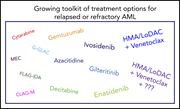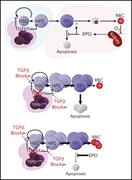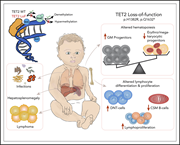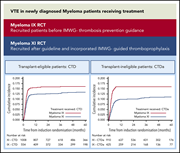Issue Archive
Table of Contents
BLOOD COMMENTARIES
HOW I TREAT
How I treat relapsed or refractory AML
DeWolf and Tallman describe how they consider treatment options for patients with relapsed or refractory acute myeloid leukemia. While participation in clinical trials is highly desirable, they provide guidance on treatment with newer targeted agents when trials are not available or not suitable, taking both clinical and genetic factors into consideration.
CLINICAL TRIALS AND OBSERVATIONS
Treating neutropenia and neutrophil dysfunction in glycogen storage disease type Ib with an SGLT2 inhibitor
Clinical Trials & Observations
Wortmann et al report 4 individual cases where the glucose-lowering drug empagliflozin was used off-label in patients with neutropenia and neutrophil dysfunction caused by glycogen storage disease Ib and unrelieved by granulocyte colony-stimulating factor. Their data provide preliminary evidence to justify a clinical trial of its efficacy and safety.
HEMATOPOIESIS AND STEM CELLS
Megakaryocyte TGFβ1 partitions erythropoiesis into immature progenitor/stem cells and maturing precursors
Di Giandomenico and colleagues demonstrate that megakaryocytes, through transforming growth factor β1 (TGFβ1) secretion or activation, play a key physiological role in regulating steady-state erythropoiesis, controlling production of erythropoietin-responsive committed erythroid progenitors from more immature cells. This takes us 1 step closer to understanding how the full cycle of red cell production is regulated.
IMMUNOBIOLOGY AND IMMUNOTHERAPY
Germline TET2 loss of function causes childhood immunodeficiency and lymphoma
Stremenova Spegarova and colleagues report the discovery of 3 children with autosomal germline deficiencies of the methylcytosine dioxygenase enzyme TET2, revealing that these deficiencies cause immunodeficiency, autoimmunity, and lymphoproliferation, including lymphomas. As well as highlighting the importance of TET2 for immune function, they also investigated its effect on hematopoiesis, finding modest perturbations in myelopoiesis.
MYELOID NEOPLASIA
Glucocorticoids enhance the antileukemic activity of FLT3 inhibitors in FLT3-mutant acute myeloid leukemia
Gebru et al provide preclinical evidence that glucocorticoids can reduce survival of quizartinib-tolerant FLT3-mutant acute myeloid leukemia in cell lines and primary cells, both in vitro and in vivo. This provides a clinically testable strategy for maximizing reductions in leukemia burden and reducing the risk of relapse.
RED CELLS, IRON, AND ERYTHROPOIESIS
A fully human anti-BMP6 antibody reduces the need for erythropoietin in rodent models of the anemia of chronic disease
Petzer and colleagues tested the effect of an anti-BMP6 antibody that suppresses hepcidin in 2 rodent models of anemia of chronic disease. They demonstrate that inhibition of BMP improves systemic iron availability, improves erythropoietin responsiveness, and increases red cell production when combined with an erythropoiesis-stimulating agent.
THROMBOSIS AND HEMOSTASIS
Thrombosis in patients with myeloma treated in the Myeloma IX and Myeloma XI phase 3 randomized controlled trials
Bradbury and colleagues analyzed data from 2 very large trials of first-line myeloma therapy using lenalidomide- or thalidomide-containing regimens, demonstrating similar rates of venous thromboembolism for the 2 drugs. Importantly, they show that while thromboembolism prophylaxis reduces the risk of thrombosis, the rates of arterial and venous thrombosis remain high, particularly in the first 6 months of treatment.
LETTERS TO BLOOD
BLOOD WORK
ERRATUM
-
Cover Image
Cover Image
![issue cover]()
Embryoid bodies (EBs) on day 3 of hematopoietic differentiation of a TET2-deficient patient's induced pluripotent stem cells. The initial stage of well-formed EBs was later followed by skewed differentiation towards the myeloid lineage. See the article by Stremenova Spegarova et al on page 1055.
- PDF Icon Front MatterFront Matter
- PDF Icon Table of ContentsTable of Contents
- PDF Icon Back MatterBack Matter
- PDF Icon Editorial BoardEditorial Board
Advertisement intended for health care professionals
Email alerts
Advertisement intended for health care professionals










When sugar isn’t sweet: neutropenia in GSD-Ib
Clinical Trials & Observations